

Dave Ulrich- Rensis Likert Professor of Business, Ross School of Business, University of Michigan
Do you want to improve mental health in your organization? Below, I suggest the why, what, and how of doing so and offer a blueprint for business and HR leaders to make progress.
Many recognize that as the COVID physical pandemic turns to endemic reality, subsequent mental health issues (e.g., well-being, emotion, happiness) are increasingly critical to not only people but organizations (Figure 1). Through hosting a think tank at The RBL Institute with senior HR executives and summarizing the myriad of mental health ideas and initiatives, I present the following ideas to help business and HR leaders become better mental health proponents. I realize that this is a lot of material in one short article, but I hope it offers a blueprint for the emerging mental health agenda.
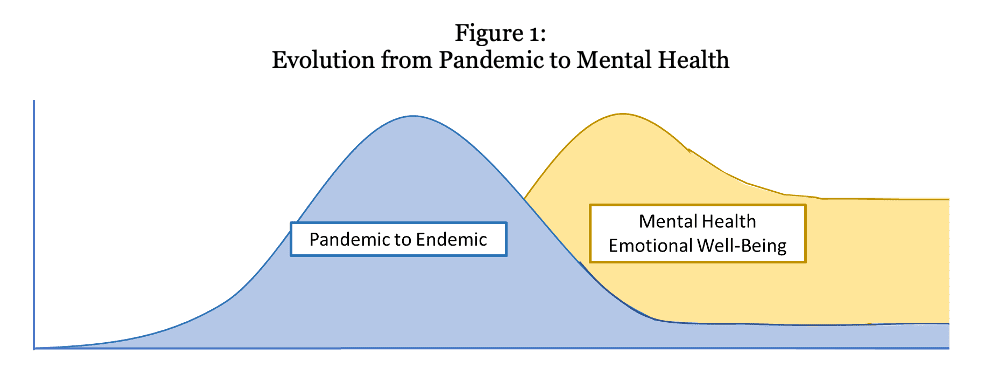
Why Mental Health Matters
The broad area of mental health concerns manifest themselves in many ways with evidence of increasing demands due to our challenging world (Figure 2).
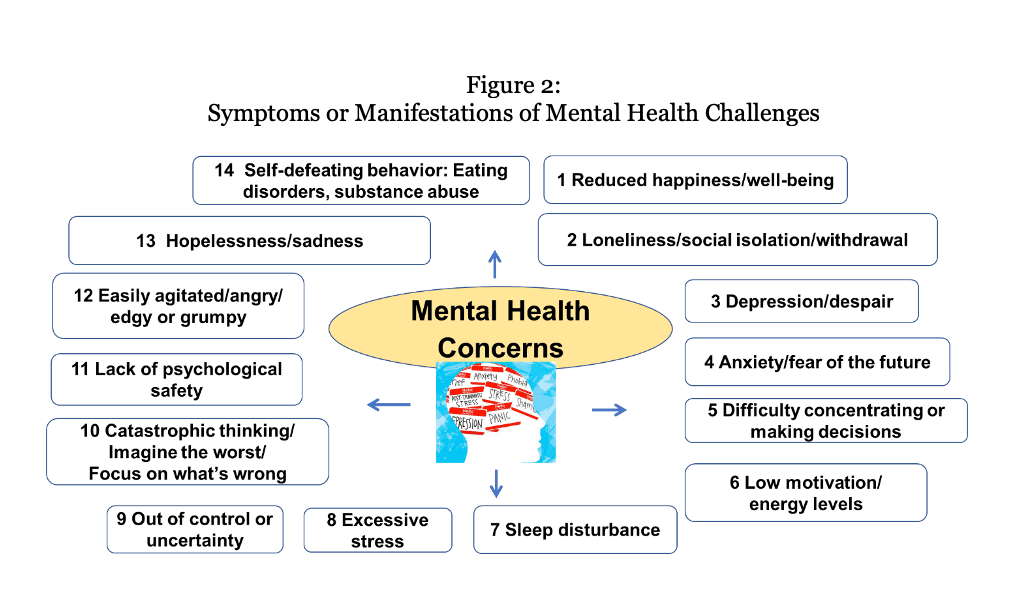
Mental health concerns matter in organizations because they shape employee experience that in turn leads to stakeholder outcomes. The business case for mental health can go from the left to the right of Figure 3 (invest in mental health so that employee experience increases and so that business, customer, financial, and community results follow) or right to left (increase business, customer, financial, and community results because of employee experience which comes from mental health). In either direction, mental health is a lead indicator for employee experience that influences results that matter.
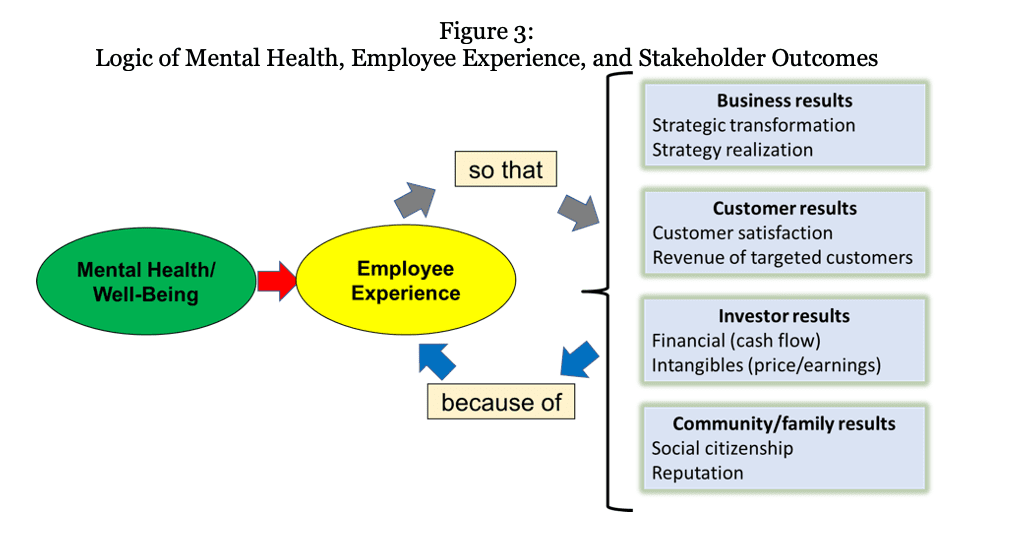
What Mental Health Means
Mental health concerns (as exemplified in Figure 2) encompass an enormous array of personal and psychological dimensions. Because mental health concerns are so diverse, we have synthesized the ways to address mental health through a focus on the employee experience into three dimensions: believe, become, and belong (Figure 4). Belief occurs when employees find meaning from their organization because their personal values derive from and align with the organization’s purpose and values. Become happens when employees learn and build a growth mindset through participation in the organization. Belong exists when employees develop connections and relationships throughout the organization. Believe, become, and belong represent both the characteristics of an employee experience (for example, in hiring, training, paying) and the ways to support the overall mental health of employees in the organization.
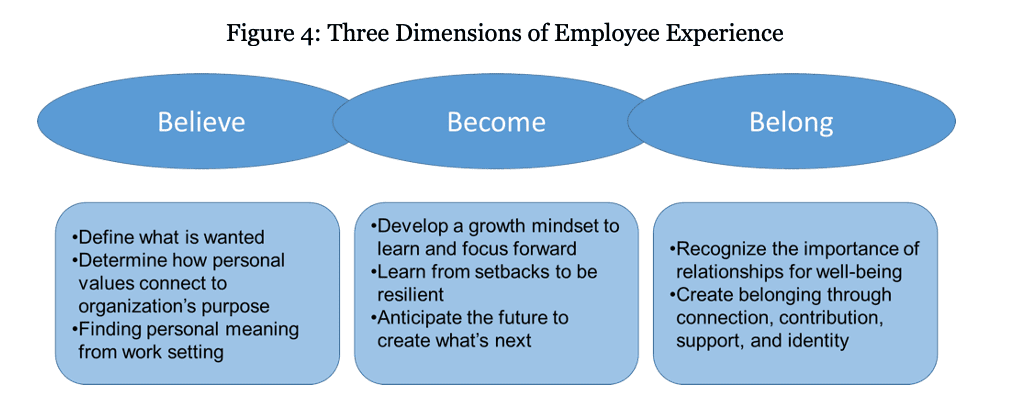
How to Improve Mental Health in Organizations
Just as mental health challenges manifest themselves in many ways and any solution for improving well-being should be personalized for each employee, I have identified four levers that can lift mental health as defined by believe, become, and belong (Figure 5). HR and business leaders who learn to deploy these levers will become mental health proponents who improve employee experience and critical outcomes.

Lever 1: Leadership Actions
Employees do what their leaders do. Business and HR leaders become proponents of mental health (defined as 3 B’s) when they model, support, teach and sponsor employee experience initiatives. Business and HR leaders will find ten specific actions within the five domains of the Leadership Code (that characterize leaders’ competencies) that leaders can do to improve mental health for themselves and their employees (see Figure 6).
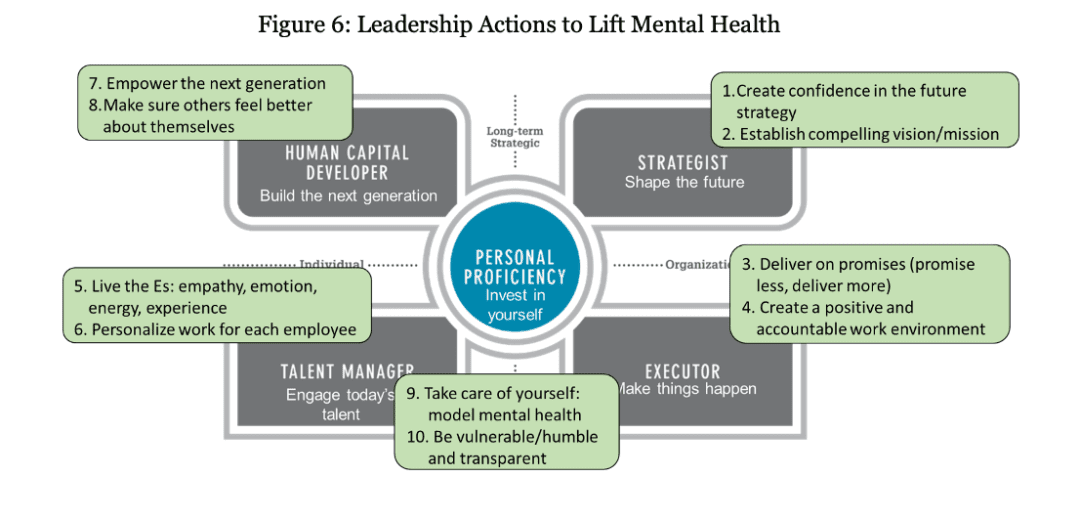
Overall, as strategists, leaders can create confidence in the future by establishing a compelling vision that increases belief in the company and its future. As executors, leaders can deliver on promises and create a positive work environment to help employees belong. As talent managers, leaders can exhibit care (through the Es), express appreciation, and personalize work to help employees become better. As human capital developers, leaders can empower the next generation and build an affirming culture. And by being personally proficient, leaders can take care of themselves with humility and transparency so that they can care for others. The ten leadership mental health actions can become part of leadership selection, promotion, compensation, and communication. Leaders who master these ten actions will become mental health proponents.
Lever 2: HR Professional Actions
In HR work, HR professionals are often the frontline caregivers for employee mental health. They are often the emotional first responders who recognize and deal with the mental health challenges in Figure 2. They often partner with business leaders and team members to lift mental health, but they are frequently the architects who design and deliver mental health services.
In the most recent iteration of the HR Competency Study, five competency domains emerged that HR professionals can master to be more effective in delivering value to all stakeholders, including employees. In Figure 7, we suggest two specific actions for each of the five competency domains that will help HR professionals be mental health proponents. These specific actions in each of the five domains can become a blueprint for preparing HR to fulfill their caregiver opportunities.

Lever 3: HR Practices
HR practices can be categorized into four areas related to people, performance, communication, and work (as indicated in Figure 8). These four practice areas can be designed and delivered to lift mental health and employee experience. Employees can be hired, trained, and promoted based in part on their emotional needs. Mental health indicators may become part of any leadership assessment. Extensive communications can occur to ensure attention to mental health. And work policies and practices can further mental health.
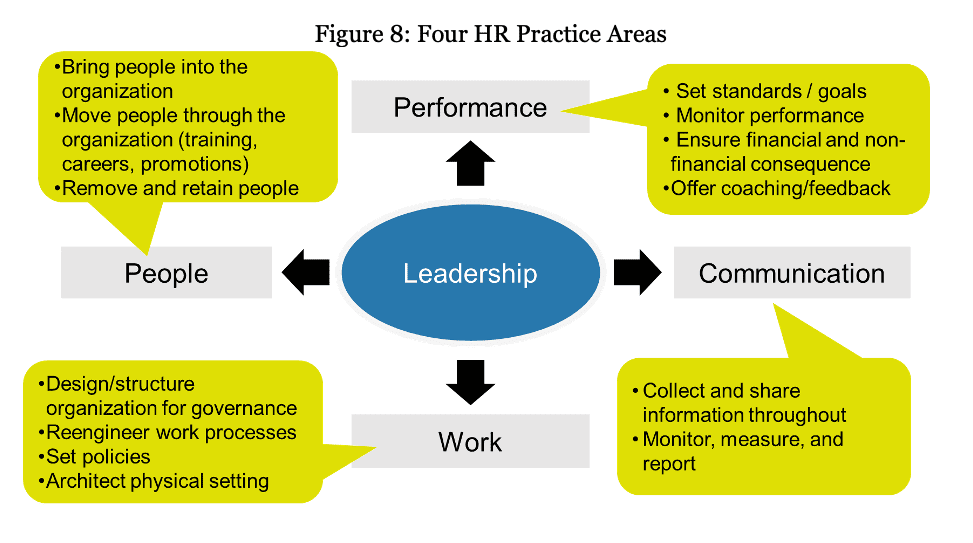
Lever 4: Right Culture
My colleagues and I have suggested that culture integrates purpose, brand or identity, and values and behaviors, what we call creating the right culture (see Figure 9). Culture then becomes the link between customer and employee experience. Mental health, in this cultural definition, is part of an organization’s purpose or mission statement, included in core values for employees, and part of the brand identity with customers and investors.
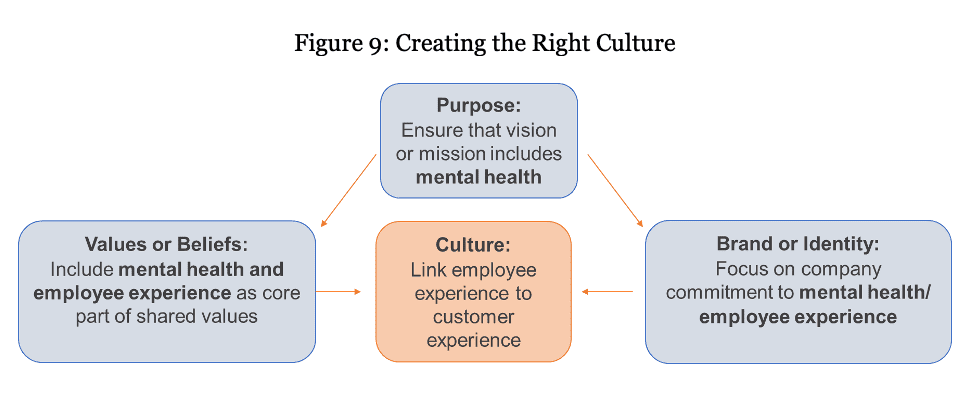
Conclusion
This information about the why, what, and how of promoting mental health offers business and HR leaders a clear and actionable blueprint for supporting the mental health of their employees, which leads to a better employee experience and better business results. The following audit could be done to determine where to focus and to track progress.
By drafting and implementing the mental health blueprint in this post, business and HR leaders become proponents who help mitigate the mental health crisis.


Dave Ulrich is the Rensis Likert Professor at the Ross School of Business, University of Michigan, and a partner at The RBL Group, a consulting firm focused on helping organizations and leaders deliver value.
Written by: Dave Ulrich
Dave Ulrich Employee Experience HR Strategy Leadership Wellbeing
Previous post

- 2656
- 1
labelNews today2022.03.07.
Ubisoft, Google, AirBnB and Flo Health Inc. – How companies respond and provide much-needed support for their staff in Ukraine
Farai Mugabe, Content & Research, The HR Congress The global COVID 19 pandemic has taught us, that love and care of staff during tough times will make them stay and [...]
Similar posts

labelArticles today2024.10.21.
The success-recipe to build agile and future-ready organizations in 2025 and beyond








Post comments (0)